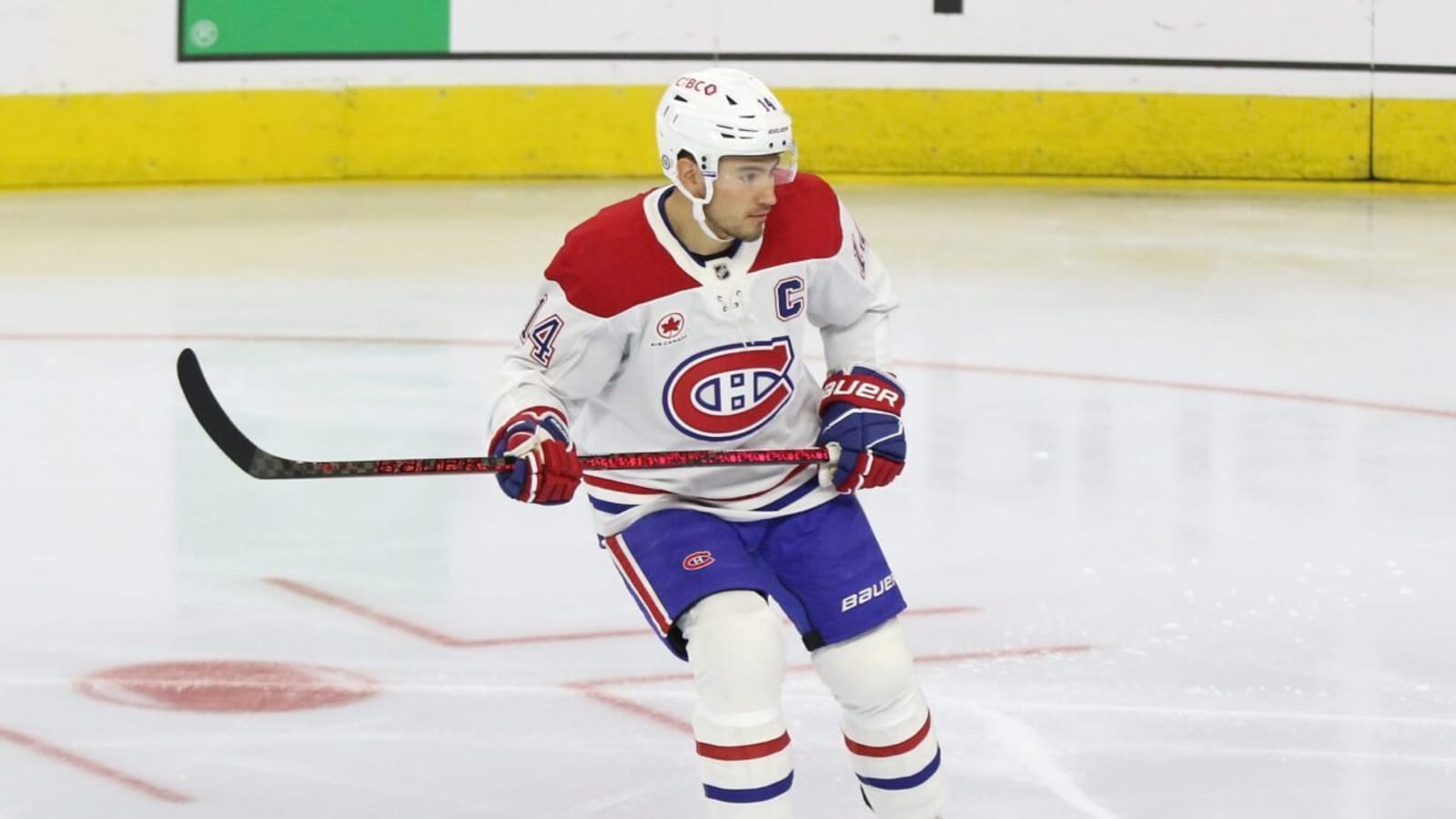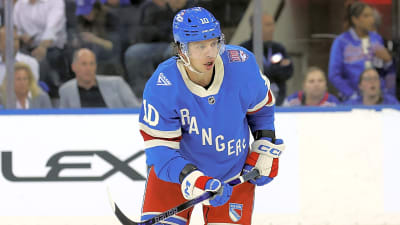
Montreal Canadiens general manager (GM) Kent Hughes has to find a legitimate second-line centre to add to his roster. Kirby Dach has missed most of the last three seasons with injuries, and with the uncertainty surrounding the club’s centre depth, the big question is whether Hughes will pursue a long-term solution or a stopgap measure.
While fans may be hoping for a trade that solves the problem, Hughes is more likely to find a stopgap, as Montreal has a legitimate solution in hand, Michael Hage. His career to date seems out of a storybook, but the team’s need for a long-term solution and his skill set will get him to where he and the organization want him to be: centring a top-six line in Montreal. The Canadiens’ style of play and lineup all point to him being groomed for the role.
Canadiens Blueprint
Head coach Martin St. Louis has tendencies, and one of them is to pair players when building a line. Montreal’s top line is built around the Nick Suzuki and Cole Caufield duo. The addition of Juraj Slafkovsky complements them both and completes a trio that provides a little bit of everything for teams to be successful. With a solid work ethic, high compete levels, speed, pace, size, skill, and hockey IQ, the three fit together well.
The second line is built in a similar fashion, based on the chemistry between Oliver Kapanen and Ivan Demidov. Adding Alex Newhook provides some speed and experience to a line that also has a similar blend of skills, if less complete and not as established as the top unit. It’s like a puzzle that has the outside edges already in place; now Hughes is looking for those inside pieces to complete the picture. How Kapanen fits in this puzzle provides insight into how Hage will do so in the future.
Canadiens Puzzle Pieces
Kapanen was a bit of a surprise in training camp. He exceeded expectations and started the season as Demidov’s centerman, where he has scored three goals –and no assists – in the first five games; one an impressive solo effort short-handed. At 6-foot-2 and 194 pounds, he has good size, but at 22, he hasn’t fully developed his strength. Because of this, he does not stand out for his physical play, relying more on excellent positioning and an active stick to cut off passing lanes and to recover the puck in board battles.
He struggles against more physical opponents if he can’t gain favourable positioning, but that has happened far less often this season than it did last. This demonstrates solid development in his hockey IQ, and it also makes him reliable in all situations, allowing Demidov to count on his defensive insulation and offensive predictability as a rookie and to build his game and confidence early.
Oliver Kapanen
— Sportsnet Stats (@SNstats) October 8, 2025
First member of the Canadiens to score his 1st career regular season NHL goal while short-handed since Chris Chelios on Oct 13, 1984#GoHabsGo pic.twitter.com/iN5MNloEKT
However, that doesn’t mean that the Canadiens have found their permanent solution or pairing with Demidov. Despite his use on special teams as a penalty killer (PK), Kapanen has only averaged 12:26 of ice time and has only won 45% of his faceoffs. As a centre, he is still a work in progress; however, his consistency has been the driving force behind his chemistry with Demidov thus far. At the very least, he has shown that he can become a staple in the Canadiens’ middle six.
Canadiens Grooming Hage
Hage is an intelligent center who can excel in all three zones. He has impressive puck control and protection skills and is reliable in faceoffs. He excels offensively using his speed and vision to exploit any errors made by the opposition.
It’s early in his sophomore season with the University of Michigan, but he has 10 points in five games, putting him on pace to double his offensive production from last season. As part of a strong program, Michigan has the fifth-best odds to win the National Title in the NCAA this season, giving Hage an ideal environment to develop.
Also, he has an excellent opportunity to carve out a roster spot on Team Canada’s World Junior Championship team after earning a Summer Showcase invite. By leveraging his relentless work ethic, excellent offensive and improving defensive skills, he is giving himself every opportunity to accelerate his development against the world’s top players in his age group.
Tape to tape! Michael Hage from Nick Moldenhauer and Tyler Duke pic.twitter.com/U4lmgvHJFg
— Michigan Hockey (@umichhockey) October 10, 2025
How does this point to Hage being groomed for the Canadiens? It’s the developmental approach. Montreal has built their development model to cater to each player with a personalized approach, supported by advanced statistical analysis and consistent communication with the player. Hage confirmed this in an interview with Marco D’Amico of RG.org:
“The Canadiens believe in me as a centre, and I worked hard in the summer to build up my body to be able to play the game I need to play to be a centre, improving my skating and my shot were two of the main things I wanted to improve from an offensive perspective – I want to be a shooting threat.”
-Michael Hage
Hage already has the size for an NHL centre, at 6-foot-1 and 190 pounds, but that will only improve as the 19-year-old matures. His acceleration and top-end speed need improvement to keep up with faster competition at higher levels, but he has already shown growth in that area since his draft year. However, what will ultimately help him become a good partner for a playmaker like Demidov is to also become a shooting threat. The University of Michigan recently added former Canadiens captain Max Pacioretty, who had multiple 30-plus goal seasons in the NHL, as an assistant coach.
Pacioretty was known for his shot; it was heavy, and he had a quick release that took goaltenders by surprise. This is the kind of experience and skills that Hage stated he wants to add to his game. Becoming a shooting threat will complement Demidov well. Also, his dedication to learning how to play away from the puck, reading his opposition’s habits, will help him defensively and help launch the transition game.
For the Canadiens, developing Hage into a reliable two-way centre means more than just shutting down top lines or winning faceoffs. It means he can be relied on in all situations and provide essential skills to let St. Louis build another complete line by pairing him with Demidov: a line with a solid work ethic, high compete levels, speed, pace, size, skill, and hockey IQ. This would give the Canadiens another top-six line that can outperform their opponents on a nightly basis.
More must-reads:
- Flyers in tough spot with former first-round pick Matvei Michkov
- How Sidney Crosby could actually leave Penguins for Canadiens
- The 'College basketball AP preseason No. 1 teams' quiz
Breaking News
Trending News
Customize Your Newsletter
 +
+
Get the latest news and rumors, customized to your favorite sports and teams. Emailed daily. Always free!








